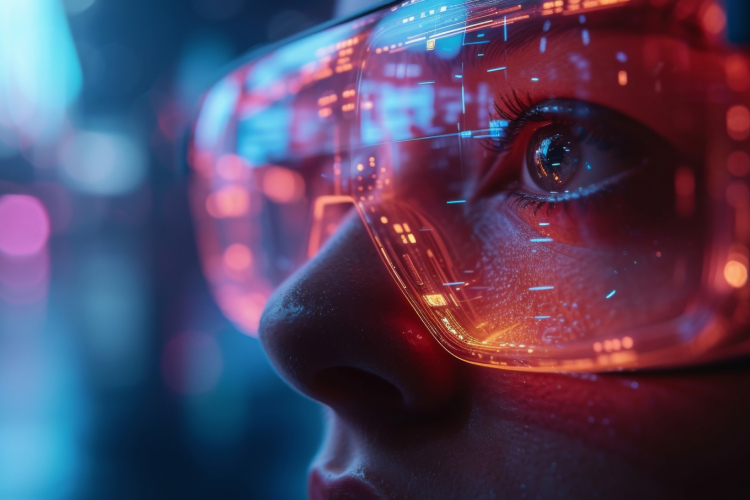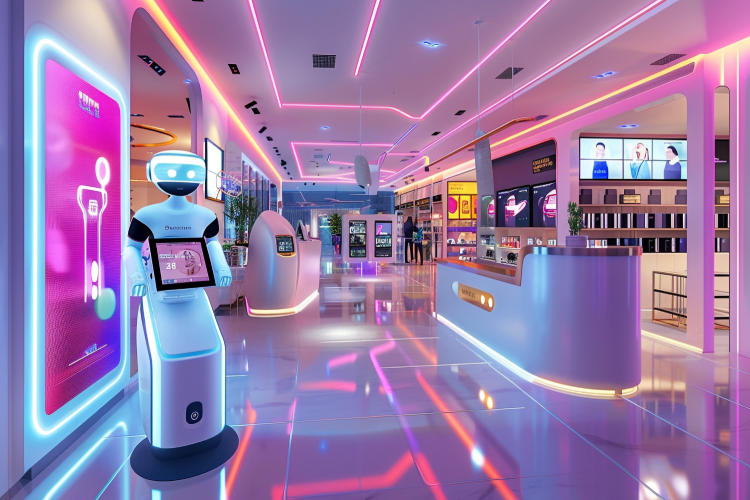Accelerated digitalisation is increasingly forcing retailers to rethink the way they interact with consumers. Technologies like artificial intelligence, virtual reality, DOOH, and AI assistants are fundamentally transforming the retail industry and, above all, redefining how brands engage with customers. The "phygital" phenomenon, combining 'physical' and 'digital' has gained popularity in recent years. This strategy harnesses synergy and integrates physical stores with digital channels, leading to a seamless and engaging consumer experience.
In the rest of this post, we will look at which touchpoints can be transformed into new consumer experiences through the use of technology.

Digital advertising as a key touchpoint
Digital advertising plays a key role in phygital strategies, enabling companies to target and engage consumers through innovative approaches. Modern ad formats such as interactive video ads, AI-generated ads, augmented reality (AR) ads and others offer personalised and engaging experiences before consumers even enter the store. These formats bridge the gap between digital browsing and physical shopping, improving conversion rates.

The role of gamification in increased customer engagement
Gamification elements such as scoring and reward challenges boost consumer engagement through fun and interactive experiences. Retailers can develop applications that reward customers for visiting stores or interacting with products, increasing customer loyalty and frequency of visits. With AI, gamification elements can be upgraded to integrate games into apps, advanced ad formats or websites and bring them to life with true cinematic stories, allowing consumers to take an even more active role in them.

Using AI-powered smart assistants
While we used to spend considerable time in our browsers “surfing” and researching products online before making major purchases or buying products and services, search marketing is gradually being replaced by conversational marketing. Customers increasingly prefer to talk to a brand or a company. This practice is effectively replacing talking to a salesperson at the point of sale. Now, the salesperson is a smart assistant, powered by artificial intelligence to provide customers with quick personalised answers anywhere, anytime, and even in multiple languages.
An example of the effective use of a smart AI assistant to drive sales and improve the customer experience is the virtual AI assistant for the new Peugeot 2008. It demonstrated that consumers are open to using AI assistants, as they replace search engines while also allowing for interaction through human-like conversations. Peugeot has increased the number of sales opportunities by a third and made 28% more offers for the Peugeot 2008 by introducing a digital ambassador for the Peugeot 2008, which also acts as an AI-powered assistant in the pre-purchase process.
New technologies play a role in better understanding and targeting customers
Artificial intelligence allows retailers to better understand their customers and gain better insights into their buying habits. By combining AI with proprietary databases, retailers can better understand buying patterns, accurately identify relevant customers or target audiences, and implement more precise marketing and micro-targeting strategies.
While VR and AR traditionally allowed consumers to ‘experience’ products before purchase, leading to greater engagement and satisfaction, AI is becoming increasingly active in this field. Advanced AI models such as Sora will soon allow us to create personalised ads and products and experience them through an AI-generated ads. This future is already here and will become more prominent in advertising soon.

Digital point-of-sale displays and sales promotion robots
The shopping experience itself is turning digital. More digital screens are popping up in stores and at points of sale, not only to display ads but also to provide virtual assistants or advisors. Whereas we had friendly assistants asking us “How can I help you?” not too long ago, today the experience is much more experiential, personalised and authentic, thanks to generative artificial intelligence. This technology has given a significant boost to the development of digital assistants. The use of robots as salespeople or advisors is becoming more common, and people are gradually accepting them as a part of everyday life rather than something out of a science fiction movie.
Cross-channel transformation into phygital strategies and performance measurement
Traditional cross-channel strategies are being replaced by advanced phygital approaches that offer a more seamless integration of physical and digital channels. These phygital strategies allow companies to create more dynamic and interactive interactions with consumers, increasing the effectiveness of engagements and improving the overall consumer experience.
However, accurate monitoring and measurement of the success of phygital strategies are crucial for their success. Tools like Adobe Analytics provide real-time insights into consumer behaviour and the effectiveness of various marketing tactics across channels. These analytical tools allow companies to adapt their strategies, optimise consumer interactions and maximise ROI. As an advanced analytics solution, Adobe Analytics provides detailed analysis of consumer journeys from digital views to physical purchases, helping to fine-tune marketing approaches for better cross-channel consistency.
Phygital is not just a response to changing consumer demands, but an opportunity for retailers to leverage advanced technology and improve their competitive position. Companies that successfully implement phygital strategies not only improve the consumer experience, but also lay the groundwork for sustainable success in a rapidly evolving environment. This is why phygital is not merely a trend, but a necessary component of the commerce of the future, blending digital innovation with physical contact to create experiences that are truly worthy of the modern consumer. Phygital is more than just a bridge between two worlds; it is a way to completely transform the shopping experience.
